A blog relating to my reasearch, readings, ideas, and concepts in Art History
Don't wanna be here? Send us removal request.
Text
Antagonism and Relational Aesthetics by Claire Bishop
The Function of the Studio essay by Buren made me rethink the exhibitions analyzed in Whitewalling by d'Souza because it made me consider a new possibility. Maybe it was not the artwork or the race of the artists was not problematic. Instead, the frame artworks are presented in is problematic. It made me think more about the relationship the art has to its environment, and that speaks to how it is perceived. I went on to read Antagonism and Relational Aesthetics by Claire Bishop, which delves more deeply into the idea of art and its relationship to the environment in which it is exhibited.
Relational Aesthetics art movement of the 1990s was a movement that "saw artists hoping to foster interaction and communication between artist and viewer through participatory installations and events." Bishop leads her thoughts about the relational art movement through the example of Untitled (Free), 1992 by Rirkrit Tiravanija. A piece where Tiravanija transferred everything from the gallery's back office – to the exhibition space. He then converted the makeshift, empty office space into a sort of restaurant, where he cooked curry and rice, serving it to visitors free of charge. Bishop says Untitled (Free) has 'no inherent friction' amongst the audience because the 'public' was a constructed entity. This so-called 'public' consisted of an imposed collective, or community, of people who relate to one another. The makeshift public that formed was more consistent with a 'microtopia,' which is a community that made through a commonality amongst people. It is no coincidence that the audience that came to Tiravanija's opening exhibition was all linked or connected through their involvement and participation in the contemporary art world. If the audience all has a common link or a sense of connectivity, it prevents the possibility of forming a genuine public, which requires an air of randomness and relationship to the people that live in the community where the gallery exists. With all that said, the critique and dialogue of this relational artwork is a social construct. This realization makes one think of how the museum and gallery institutions are also socially constructed and meant to serve those who are of similar social status; more often than not, people of similar social status are people of similar race and similar ethos. Which Bishop sees as a problem, and thinks relational art lacks real democracy. There is no sense of raw, real, or confrontation. She goes on to suggest other works of art, one by Santiago Sierra where he confronts the audience with an array of cardboard boxes that hold Chechnyan refugees seeking asylum in Germany as a better example of addressing politics and protest in art than Tiravanija's work. After reading more about Tiravanija's work in A Short History of Rirkrit Tiravanija by Jerry Saltz, I do agree that the exhibition was a polite and easy to swallow way of presenting his view of the growing wealth gap. To Bishop's point, the exhibition was unantagonistic and failed to make the institution look within itself to see the role it plays in the presented issue. As well as failed to make the audience uncomfortable, and make them contemplate the political stance Tiravanija was passively taking.
To bring this back around to discussing Buren’s idea of the frame and my idea that the frame could make an artwork more or less problematic.. imagine that Untitled (Free) by Tiravanija was titled “Outsourcing Asian Labor for your pleasure” That would have lead the narrative and experience of this work in a completely different direction. Where the relationship to the gallery space would have meant something different and the antagonistic element of the work would have been explicit in its title and dictated its experience.
0 notes
Text
The Function of the Studio and beyond...
In The Function of the Studio, the essay talks about the 'first frame' which is the artist's immediate environment, and the 'second frame' which is the gallery space and how artwork is impacted and perceived based on its environment.* (Environment meaning -the natural world, as a whole or in a particular geographical area, especially as affected by human activity. and or -the setting or conditions in which a particular activity is carried on.) Buren is saying in many more words, that the artwork is constantly fluctuating, and that it changes depending on its location. Although Buren's focus in this reading is on the studio and how that space impacts the work, I've taken those same concepts and applied them further. The exhibition of all-white artists at the Metropolitan Museum of Art in 1969 named "Harlem on my Mind." was a contradiction, exclusion, and appropriation of a culture and a people. Now imagine the same band of all-white artists in the same museum in an exhibition named "Harlem seen through white eyes" or "Harlem; from the outside looking in" would have been a much more appropriate and less problematic exhibition. The frame would have been better suited for the artworks: leaving less room for questions of intention and whose version of Harlem is present. The frame of the artwork is very important to set up the ways the art exhibition is to be experienced and its lasting impression.
The way Buren describes the studio as a place of delusion and lack of diversity is the same way the museum prior to exhibiting these works is a sort of bubble with like-minded people, that lack diversity in opinions and experience. That is how very problematic frames for the artwork are formed because they are constructed in a bubble until they are presented to a public that pops that comfortable bubble space. The public then brings that diversity of dialogue and experience that highlights the problems not only with the with the work but with the ethos of the institution presenting the work.
0 notes
Text
Analyzing in relation to other analysis
Throughout the semester, I have read Whitewalling a book by Aruna d'Souza, The Function of the Studio by Daniel Buren, Antagonism and Relational Aesthetics by Claire Bishop, A Short History of Rirkrit Tiravanija by Jerry Saltz, and I have read The Turn of the Screw by Alexander Alberro. I have found one underlying theme throughout all of these books and articles; traditions in the Art world. More specifically, a critique of these long-standing traditions in the "Artworld". These readings have explicitly written about how the art world, as well as the world we live in, nationally and internationally―has continually grappled with the politics of race and social status. The ways this struggle has influenced how museums, curators, and artists tussle with notions of freedom of speech and the scope of censorship.
Whitewalling: Art, Race & Protest in 3 Acts is a book that analyzes three events that sparked protests against racism at New York art institutions that are each a decade apart. The book includes Dana Schutz's painting of Emmett Till in the 2017 Whitney Biennial, Donald Newman's solo show titled "The Nigger Drawings" at Artists Space in 1979, and "Harlem On My Mind," an exhibition of all-white artists at the Metropolitan Museum of Art in 1969. Each of these exhibitions proved problematic for everyone involved: the artist, the institution, and the audience. The timeline for these exhibitions is important because it establishes the fact the cultural competence of these institutions or the art world at large had not evolved or advanced with the times. These examples are ones that have forced art institutions to address who they are and which public they are meant to serve. As I finished reading d 'Souza and began reading the other articles like The Function of the Studio by Daniel Buren and Antagonism and Relational Aesthetics by Claire Bishop, I imagined the exhibitions presented would have been less problematic if they were framed differently. I thought about the frame in which I encountered these artworks and what I would have thought of them if the first frame was not through D'Souza's analysis.
1 note
·
View note
Photo
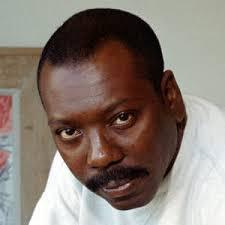
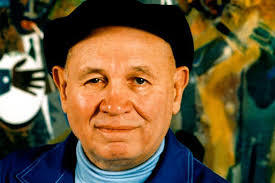
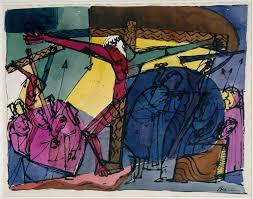
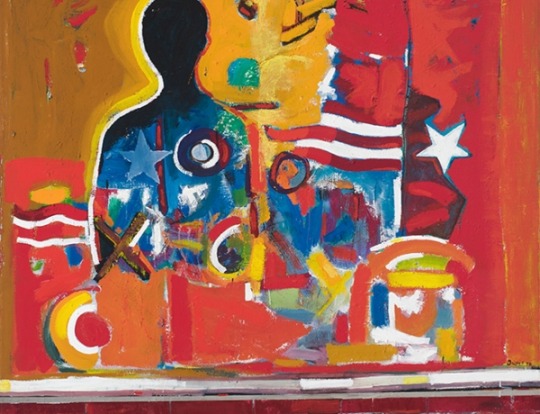
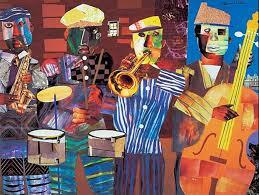
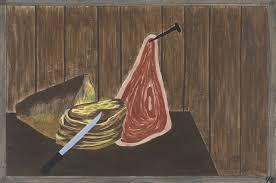
I decided to start reading the history of modern art: fifth edition. I started with chapter 18: American art before World War II.
I started with Subtitle: ‘Black History in Modern Painting: Bearden and Lawrence.’ which led into ‘Social Protest and Personal Pain: Mexican Artists’
I decided to start with this part of the chapter, because I felt like it would help me better understand some of the ideas and concepts that are being explored in whitewalling by author Aruna D’sousa. To go back to my previous point when I first started reading Whitewalling , I think the frame in which art is displayed is definitely going to change the perspective that we have on it, and how it is prioritizes. Who gets to tell which stories and who gets to be praised for telling these stories, who gets to decide if the stories are important- certainly seems to come down to race and even the hue of one's skin tone. I thought it was interesting to see how Romare Bearden’s art was written about and described in the text book. He was an important figure in various art movements like abstract expressionism, neo- expressionism, cubism, and modernism- but he was only included in the ‘Black History-Social Realism’ section of this textbook. Romare Bearden was very fair skinned described as “white passing”. American artist Jacob Lawrence was also mentioned beside Bearden. He too gained Notoriety during the time of the Harlem Renaissance in the 1920s. Lawrence also participated and flourished in visual art trends such as cubism, modernism, contemporary, and social realism. In this textbook of 27 chapters the only place where black and brown artists can be highlighted, utilized, or even included is in the “Black History- social Realism” portion of the book that consists of two pages.
It’s problematic that there is a chapter for each one of those artistic movements- and yet there was only room for AA artist like Jacob and Bearden in the blacks only section.
This is what I meant when referencing a metaphorical frame; and I believe this is what D’Souza in exploring in Whitewalling. There is certainly a frame and here- through the lens of the concepts being explored in Whitewalling: Art, Race & Protest in 3 Acts, we are analyzing it.
3 notes
·
View notes
Photo

“White artist Dana Schutz depicting the brutally lynched body of the young Emmett Till in his coffin. (Open Casket 2016)” - Setting the Stage, Whitewalling by Aruna D’ Souza
I included this photo for context. Because this is a piece I have never seen nor hear of, a conflict and controversy I was unaware of, and I also have never seen the original photograph of Emmett Till in his coffin.
This quote from this part of the book, stuck out to me because I thought it was a great example of what the author is exploring; Who gets to tell a story, how the story is framed affects how its viewed, and what the possible consequences could be, based on the perception of the audience.
If I had not known the racial background of the artist, would I think this work was important and relevant- especially in 2016/2017 during the pinnacle of the #blacklivesmatter movement. I think the introduction of this work to me, framed this way by the author (D’souza), made me think more about the artist and her audacity, her intention, and what the piece meant to her- as opposed to what it meant to me. So for me this work is important and I think if she was an AA artist she would not have gotten as recognized for this work, the work would have not been placed infant of as many peoples eyes. I believe the artist recognized her privilege when she made this work and was prepared to face the racial criticisms. So with that assumption I can comment this artist for this work regardless of what she stood to gain from it because I believe the social gain and importance of the circulation if this piece was much, much more important.
1 note
·
View note
Photo

Artist: Sol LeWitt
Title: Arcs from Four Corners, 1986
Medium:Prints and multiples, Woodcut in colors
Size:23 x 32.5 in. (58.4 x 82.6 cm.)
Movement:Contemporary Art
same element of movement i talked about in my last post. I love his use of black in this piece. I like the stark black line that divides one painting into four separate segments.
2 notes
·
View notes
Quote
When an artist uses a conceptual form of art, it means that all of the planning and decisions are made beforehand and the execution is a perfunctory affair. The idea becomes a machine that makes the art,
1967 essay Paragraphs on Conceptual Art by Sol LeWitt
1 note
·
View note
Photo

I saw this painting and it started vibrating. It looks alive. From this view i imagine looking down into an infinite water-well of colors. It’s fun, with an element of childishness with use of vibrant rainbow colors and block shaped rectangles that build a pattern. All while still displaying complex design and expert paint application. - Painting by Sol LeWitt
1 note
·
View note
Text
In my own practice
as I am a practicing visual artist working in various media and mediums I always try to figure out how specific ideas relate to, or negate the work that I create/make.
I thought about all the things I dis-identify with:
Blackness
being a Bitch
being a Hoe
being a Nigga
being a ”BabyMother”
being a Single mother
being a Student
being ghetto
being American
being pretty
being ugly
being gay
being manly
being an artist
being a sister
being a twin
Meaning these are all things I can relate to but also do not relate to these titles in societal standards. I identify with each or these labels but also do not identify with the stigmas attached to these labels.
This idea of dis-identification becomes demystified the more research/reading i do, while also becoming less clear cut the more I understand the concept of it. Dis-identifying is a very complex idea/concept I am realizing more and more.
1 note
·
View note
Text
Thinking more about what it means to disidentify
This reading by Munoz is written about what it means to him and examples hes had of dis-identification by colored persons in the queer community. Because I do not identify as queer, I had to look beyond the specifics around sexual preference and relate this idea of dis-identification in a broader more general perspective. I found a quote that was a more general depiction of dis-identification and helped me to be able to generalize Munez’s opinions so that I can further relate to the plight; relating to but also working against societal stereotypes in way where you represent while also expel common place/ generalist view of groups of people.
���the ways in which one situates oneself both within and against the various discourses through which we are called to identify.”
1 note
·
View note
Text
I have a thing about dictionary definitions..
Definition of disidentify. : to rid of identity or characteristic qualities also : dissociate.
According to the Merriam-Webster online dictionary
2 notes
·
View notes
Photo
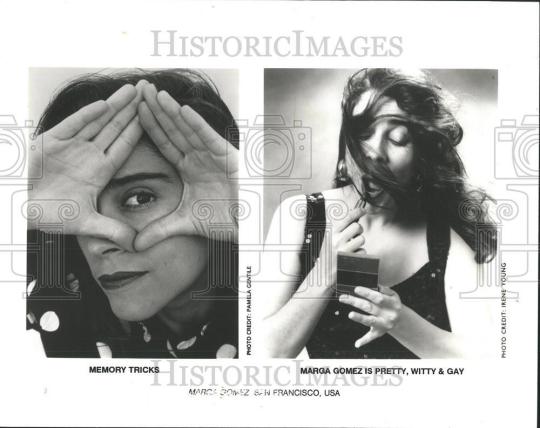
The introduction of Disidentification opens with an introduction to Cuban and PuertoRican- American artist Marga Gomez. She is known as a performance artist and the author Munoz recounts what her work meant and did for him. He recalls a performance piece by her in 1992 titled Marga Gomez is Pretty, Witty, and Gay. Her piece came at a time when the Bowers v. Hardwick U.S. Supreme court decision to dissolve all the rights to privacy for the LGBTQ community. Marga’s piece is a play on the invasion of queer privacy, as it is staged in her bedroom. She defies the law makers by being openly gay and proud while also abiding by the laws by giving up her right to privacy as a queen person in America.
A part of the passage that caught my attention was a quote from Marga, that for me explained how she dis-identified with being a queer woman in America at the time.
“Reconfigured as sexy and glamorous and not as the pathetic and abject spectacle that it appears to be in the dominant eyes of hetoronormitive culture.”
1 note
·
View note
Photo

I was reading from a photo copy of the book, when I googled it i found the cover art and I love it, from what I read this image complements the ideologies addressed in the 34 page introduction of this book, perfectly.
1 note
·
View note
Quote
Dis-identification is meant to be descriptive of the survival strategies the minority subject practices in order to negotiate a phobic majoritarian public sphere that continuously elides or punishes the existence of subjects who do not conform to the phantasm of normative citizenship
from Disidentifications by Jose Estaban Munoz
2 notes
·
View notes